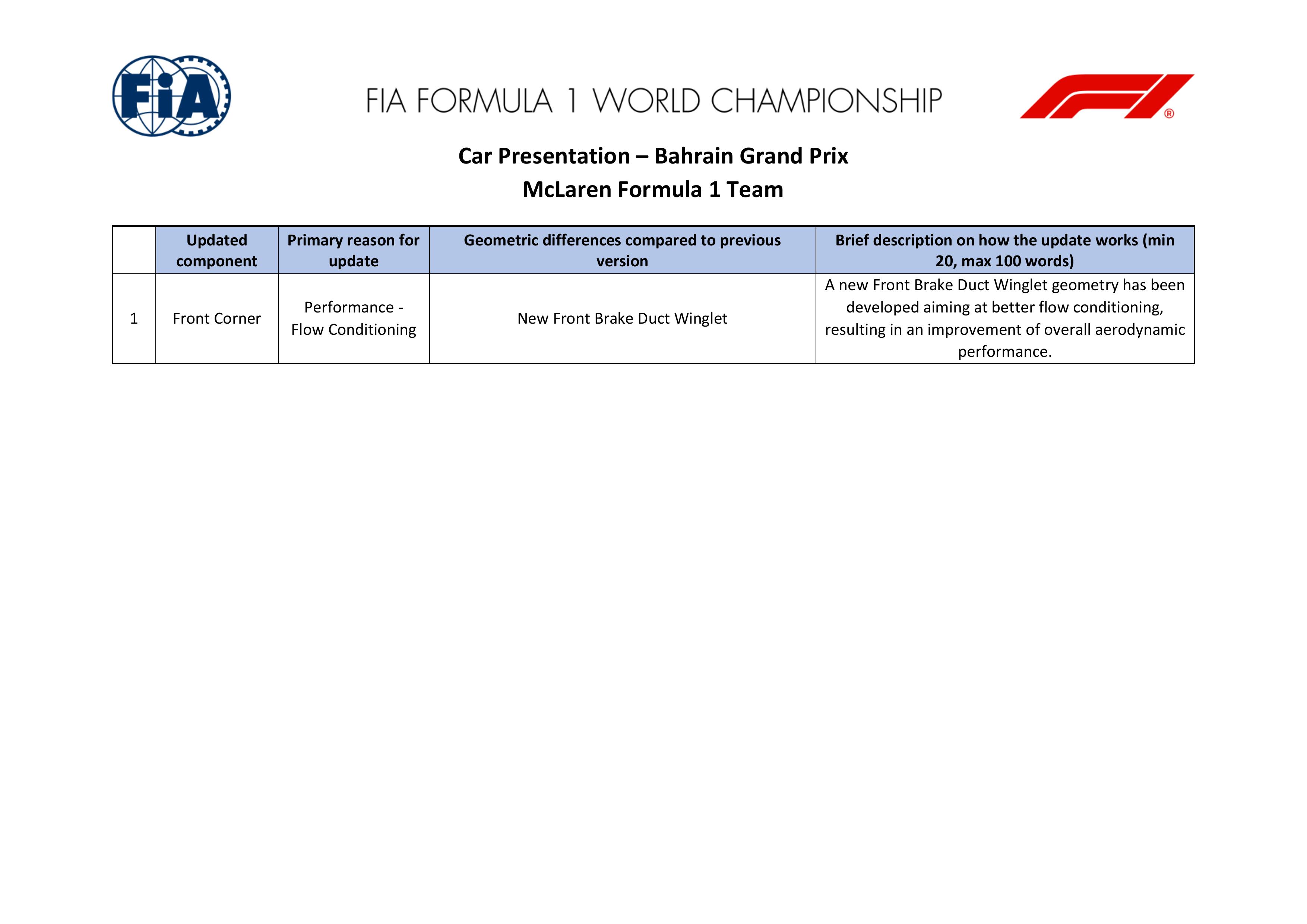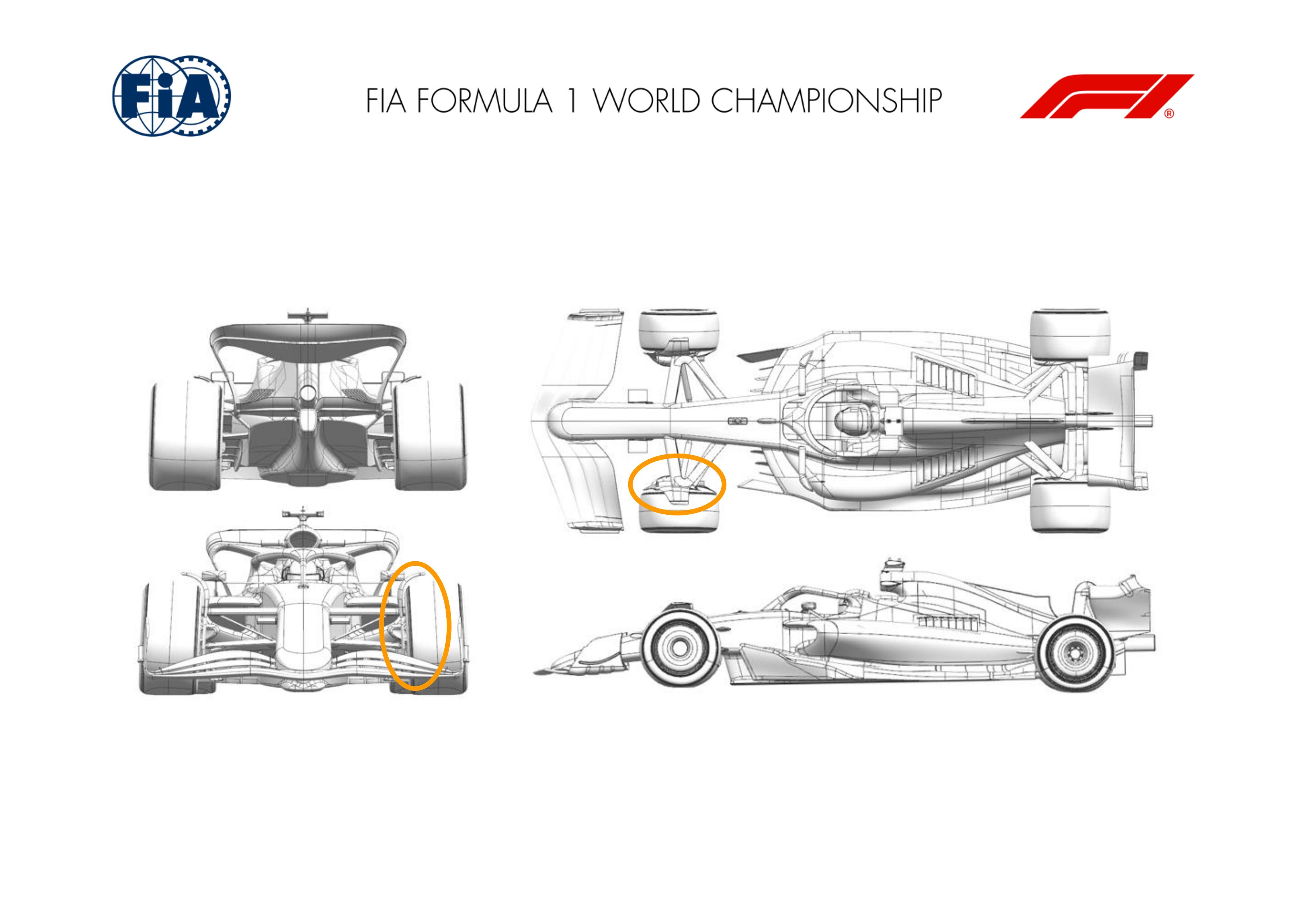Very interesting angleSmallSoldier wrote: ↑11 Apr 2025, 00:42We normally don’t get to see this angle:
https://i.imgur.com/tpGkv06.jpg
Vía: @xavigazquez
- Login or Register
No account yet? Sign up
Very interesting angleSmallSoldier wrote: ↑11 Apr 2025, 00:42We normally don’t get to see this angle:
https://i.imgur.com/tpGkv06.jpg
Vía: @xavigazquez


I noticed it too. Got F-Duct flashbacks. It must have been driver-cooling related though.

One thing I am interested in is how the airflow off the suspension arms is different for a long, but angles arm (45 degrees here almost) vs one that is completely perpendicular to the airflow.
My understanding is the rules require them to be essentially neutral for aero load, but can see what you mean from having them angled as their main function, then puts a little "twist" in just how the rules can be applied.SiLo wrote: ↑14 Apr 2025, 15:42One thing I am interested in is how the airflow off the suspension arms is different for a long, but angles arm (45 degrees here almost) vs one that is completely perpendicular to the airflow.
In my head (and with no other bodywork affecting it) a 90 degree suspension member would disrupt the airflow but is unlikely to create are real kind of vorticity behind it. Whereas a 45 degree one is actively trying to roll up a vortice behind it.

If I get a minute I will try and draw a diagram of what I mean, but I think you've understood me. To me, the suspension members angled like that with quite a deep profile and going to be generating quite a good amount of outwash to flow behind the front wheels. Might need to see if I can find some CFD pics online for similar designs to see if my guessing is in any way accurate.Farnborough wrote: ↑16 Apr 2025, 08:21My understanding is the rules require them to be essentially neutral for aero load, but can see what you mean from having them angled as their main function, then puts a little "twist" in just how the rules can be applied.SiLo wrote: ↑14 Apr 2025, 15:42One thing I am interested in is how the airflow off the suspension arms is different for a long, but angles arm (45 degrees here almost) vs one that is completely perpendicular to the airflow.
In my head (and with no other bodywork affecting it) a 90 degree suspension member would disrupt the airflow but is unlikely to create are real kind of vorticity behind it. Whereas a 45 degree one is actively trying to roll up a vortice behind it.
Obviously they are highly evolved in both sense, mechanical /aero in their design. Furthermore, highly resolved in their detail of interaction.
They, as I understand it, are used to help condition the wake from front wing in approach to floor leading edge. The lowest slot gap on front wing looks to feed this area too.
Beautiful in their design aesthetic, obvious in their contribution to performance. Some very lucid design thinking there.
My 2 cents :SiLo wrote: ↑16 Apr 2025, 10:57If I get a minute I will try and draw a diagram of what I mean, but I think you've understood me. To me, the suspension members angled like that with quite a deep profile and going to be generating quite a good amount of outwash to flow behind the front wheels. Might need to see if I can find some CFD pics online for similar designs to see if my guessing is in any way accurate.Farnborough wrote: ↑16 Apr 2025, 08:21My understanding is the rules require them to be essentially neutral for aero load, but can see what you mean from having them angled as their main function, then puts a little "twist" in just how the rules can be applied.SiLo wrote: ↑14 Apr 2025, 15:42
One thing I am interested in is how the airflow off the suspension arms is different for a long, but angles arm (45 degrees here almost) vs one that is completely perpendicular to the airflow.
In my head (and with no other bodywork affecting it) a 90 degree suspension member would disrupt the airflow but is unlikely to create are real kind of vorticity behind it. Whereas a 45 degree one is actively trying to roll up a vortice behind it.
Obviously they are highly evolved in both sense, mechanical /aero in their design. Furthermore, highly resolved in their detail of interaction.
They, as I understand it, are used to help condition the wake from front wing in approach to floor leading edge. The lowest slot gap on front wing looks to feed this area too.
Beautiful in their design aesthetic, obvious in their contribution to performance. Some very lucid design thinking there.

I'm quite certain the outwashing stars with the shape of the front wing profile, but the field is still affected by the shapes downstream too, so the sidepod shape plays a part.venkyhere wrote: ↑16 Apr 2025, 12:43My 2 cents :SiLo wrote: ↑16 Apr 2025, 10:57If I get a minute I will try and draw a diagram of what I mean, but I think you've understood me. To me, the suspension members angled like that with quite a deep profile and going to be generating quite a good amount of outwash to flow behind the front wheels. Might need to see if I can find some CFD pics online for similar designs to see if my guessing is in any way accurate.Farnborough wrote: ↑16 Apr 2025, 08:21
My understanding is the rules require them to be essentially neutral for aero load, but can see what you mean from having them angled as their main function, then puts a little "twist" in just how the rules can be applied.
Obviously they are highly evolved in both sense, mechanical /aero in their design. Furthermore, highly resolved in their detail of interaction.
They, as I understand it, are used to help condition the wake from front wing in approach to floor leading edge. The lowest slot gap on front wing looks to feed this area too.
Beautiful in their design aesthetic, obvious in their contribution to performance. Some very lucid design thinking there.
- The front suspension links' geometry (favouring pull rod instead of push, location of the 'car side' points of both wishbones, the severe profiling of the shrouds around these links - all designed to manipulate the air flow coming off these things in such a way that the 'flow that goes through underneath front wing' optimally hits the front floor (tea tray, the three-musketeer front fences etc).
- What keeps the front tyre wake 'away' is the massive chunk of out-and-under flowing air from the side pod entrance zone.